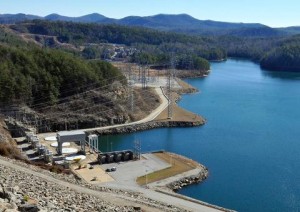HR: So Alex, what’s the gist of your topic?

I looked at how the perception of terrorism impacts water infrastructure systems in the United States. Heightened fear from potential terrorism influences security spending decisions, consumer costs, and confidence, all of which have macroeconomic consequences. In my thesis, I also conduct a cost-benefit analysis on increased spending to protect dams and how this dictates consumer spending patterns and confidence levels.
HR: Let’s talk about water. We think about it first as a biological necessity, but can you touch on its importance economically speaking?
Water is a resource input for many factors of production. Many industries would be nonoperational without it; as such, we seriously take it for granted. Water cools down overheating machinery in factories, produces electricity, provides nutrients for foodstuffs, and it’s useful for the home (ie. bathing, dishes, laundry, etc). Biologically and economically speaking, water has no perfect substitutes.
HR: Now that we are educated on the importance of water, let’s talk about dams. How did we calculate risk in the water industry before 9/11 and afterwards?

Before 9/11, a model based on what would happen in a natural disaster was used. This line of thinking assumes the worst case scenario for a structural failure was related to natural causes, such as earthquakes, tsunamis, or hurricanes. After 9/11, consequence based analysis became more customary. This model tries to anticipate the consequences of a terrorist attack on our water systems. The damage from a terrorist attack is much more devastating than natural causes because the warning time of impact is shortened and therefore we have less time to evacuate civilians or fortify defenses.
HR: What economic consequences does this shift in thinking have?
Policy wise, there is increased spending proportional to the perceived level of threat. The increased fear of terrorism forces government to take more security precautions. Additionally, there’s a huge economic consequence from consumers if a terrorist attack actualizes. Imagine if you’re living in a town and the neighboring damn gets blown up. There would be huge repercussions! First, there would be decreased levels of industry which rely on water as an input. Secondly, people in a state of panic exhibit extreme behaviors, the ripple effects of which would be felt across major US markets. In the midst of disaster, people aren’t going to be buying new MacBooks. People are going to dip into their savings and spend on their immediate safety. Even after recovery, the calamity will have depressed consumer confidence and entrench new cautious behaviors that may never reach previous levels again.

HR: So what are the costs and benefits to extra security preparedness for dams?
There are obvious monetary costs for increasing security precautions such as more frequent evaluations of structural integrity, personnel costs, and technology costs. For this analysis, I interpreted benefits as the avoidance of future consequences and costs. So the benefits included preventing lost lives, avoiding property damage, and mitigating the financial costs of repairs. My conclusion was that the present benefits from extra security outweighed the current costs. If a terrorist attack occurred, the effort to reverse the loss of consumer confidence would be so challenging that it’s worth ensuring it never happens in the first place.


Great summary!
Is Alex still doing research on this topic? If so, I would love his email address if possible. I work for the Association of State Dam Safety Officials and my email address is blewis@damsafety.org